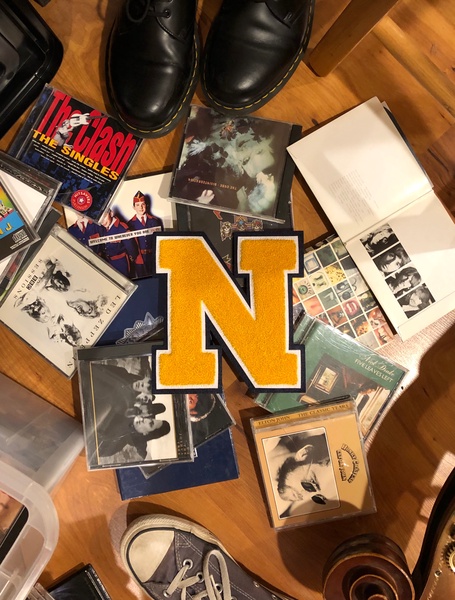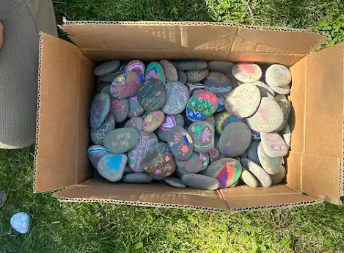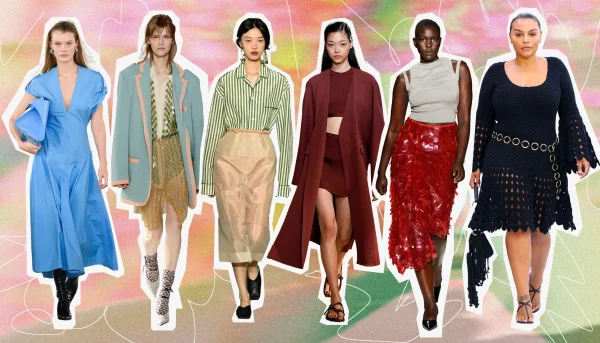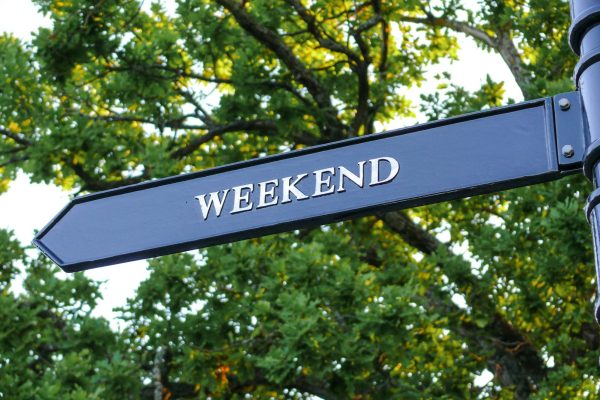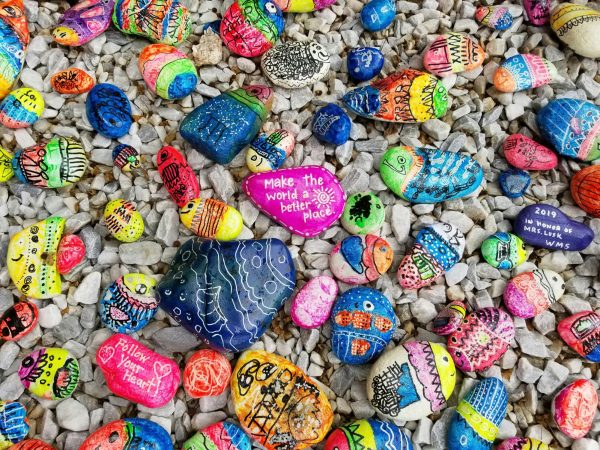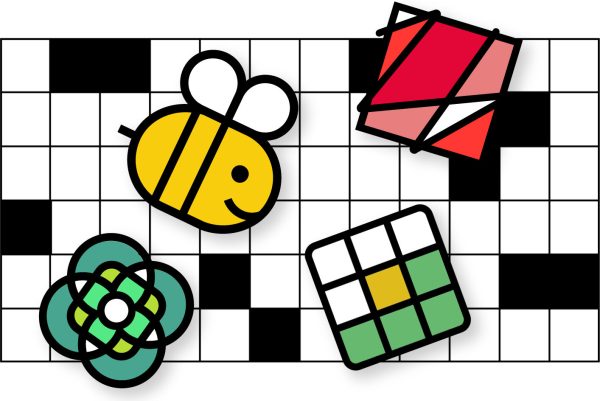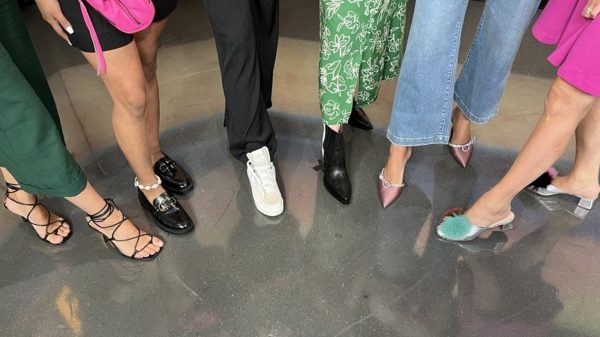The Northport Renaissance- Port Cultural Observation
June 24, 2019
When we think of the word, “renaissance,” our minds associate it with the colorful and emotional art of Michelangelo, or the brilliant advances in technology by Da Vinci and Galileo. The word itself has become synonymous with this time period in world history, when 14th century Italian scholars discovered that within ancient works of Greco-Roman origin moldering away in libraries, was evidence of a golden age of humanity. The Renaissance was a rebirth, a revival of classical European art, literature, and learning that gradually pulled Europe out of the Middle Ages and into modernity.
Anyone who has spent more than a day in the halls of Northport High School this year has caught onto the fact that the student body is undergoing its own kind of Renaissance. The difference between the two is that Northport students seem to be heavily influenced by the late 20th century: aka the 70’s, 80’s, and 90’s. Now more than ever, students are wearing vintage concert shirts and acid wash jeans, knowing all the words to Toto’s Africa and Queen’s Bohemian Rhapsody, and binging corny eighties movies from John Hughes. At the same time they are obsessed with the edgy grunge aesthetic of the nineties, while simultaneously yearning to go back to sixties Beatlemania. They’re no longer ashamed or embarrassed by their parents’ vast CD collections or dated high school photos. A large number of Northport students identify with this movement, this revival of old music, cultural, and social trends from decades past, that is by definition a modern cultural renaissance.

A major component of Northport’s Neo-Renaissance is music. Ever since the Walkman, teenagers have used portable music as a way to escape from the struggles of high school, and dive into their own worlds where music has the power to soothe a broken heart, inflate one’s confidence, or serve as a potent anthem for anger and rebellion. Many of our parents as teens were discovering music from artists like Led Zeppelin, The Beatles, and The Rolling Stones to The Cure, The Police, and The Talking Heads. Then they lived through the nineties when groups like Nirvana, Pearl Jam, and Weezer infiltrated their music collections. After all of this exposure to what many claim to be the last great musical era, many of our parents could now raise us- with these songs they had come to love playing in the background all the while.
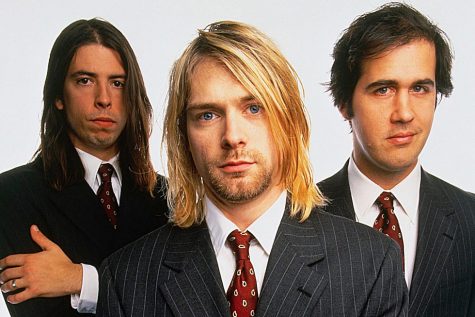
“Both of my parents were pretty big music people and held pretty substantial collections, and their broad taste has kind of been transferred down to me,” says Vincent Biello, a junior at Northport High school, when asked why he likes the type of music his parents listen to. “I guess it’s sort of a comfort thing.” This type of comfort and familiarity that Generation Z kids find in their parents’ music is partly to blame for the revival occurring. The music played in the kitchen of one’s childhood while dinner simmered on the stove could bring one back to a warm and familiar atmosphere, which is something many teens think today’s music lacks. While many Northport students listen to older music because of their parents, Sophia Borovikova, a junior at Northport, listens for different reasons.
“Well, I don’t like [older music] because it’s from the decades my parents grew up, because they didn’t really listen to it; they listened to Russian music… today’s music doesn’t appeal to me as much because it’s not as genuine… it’s just technology, not human-made sound.” Borovikova points out. Sophia’s parents are Russian immigrants, who weren’t as exposed to the American and British music that dominated the West in the late 20th century. She prefers to listen to the Steve Miller Band, Blue Öyster Cult, and The Who because she loves their raw sound, and thinks that it’s about time people finally started recognizing good music for what it is.
“I don’t like how lots of music today lacks melody and a certain beauty,” comments Natalie Thieke, a junior here at Northport who is a rank leader for flute as well as an involved member of Tri-M and numerous other musical groups. With a unique perspective regarding the musical scene at Northport, Thieke is of the opinion that nearly all music today sounds the same. Along with the classical music that she plays herself, the majority of her taste in music is from the 80’s New Wave. The upperclassmen aren’t the only ones to note the disappointment that today’s music allegedly is, as many other students and adults alike shake their heads at the mass-produced music of today.
“I dislike the heavily repetitive and electronic pop music of today, also the pandering aspect in today’s pop is not my style,” says Isabella Anton, a Northport sophomore. Anton thinks that the music from the late 20th century has more of an edge to it, and that people today are tired of the plastic image; that is the obsession with current and mass-produced synthetic pop culture. While many of Northport students do enjoy the music genres popularized today, like mumble rap by an array of rappers from Soundcloud, or pop by world-famous artists like Ariana Grande, a growing number have somewhat rejected these new forms of music.
“I think there is a general 70s, 80s, 90s cultural revival happening in our generation as a whole…” Biello remarks. “The majority of the culture of the 2010s isn’t really distinct to this decade, it is more of a hodgepodge of different elements from prior decades.” Biello makes a good point: we as a generation have access to something that our parents and the generations before us did not have: the internet and social media. This hodgepodge is only a natural extension of our seemingly infinite ability to see fashion and musical trends from years past. It also accounts for how differently teenagers feel about older versus newer music and fashion.
The fashion aspect of the Neo-Renaissance is questionable because many people wear retro clothing but only are “retro” to a certain degree. For instance: you see plenty of people wearing patterned nineties sweaters, but no one teases up their hair to the level that teenagers did in 1985. Some trends are not worth salvaging from the past, but the ones that are acceptable in today’s societal standards are everywhere. Popular brands that have caught onto this neo-renaissance include urban outfitters, whose controversially expensive garments are reminiscent of products available for a fraction of the cost at a thrift store.
Some Northport students wear fashionable clothing echoing a flair for artistic creativity while giving a nod to the 80’s and 90’s. For example, in this year’s fashion show put together by Mrs. OG and her fashion students, the styles featured an abundance of blue denim, vibrant to muted tie-dye, and bright white accent pieces. The Renaissance doesn’t stop at the art department though; it continues to influence the Tigerettes, Flagline, marching band, nearly all of our sports teams, and general student body. The mullet is making a comeback (to some people’s dismay). People like bell bottom jeans. Everyone wears doc martens, vans, and converse. Tube tops, scrunchies, mini skirts, rompers, and wire-rimmed glasses have become trendy to have, and they all have originated in decades past.
However, sometimes people go too far overboard with this retro aesthetic, going out of their way to buy modern songs on cassette or spending insane amounts of money to look a certain way. It is always fun to fantasize about living in another decade, but as F. Scott Fitzgerald wrote in The Great Gatsby: “you can’t repeat the past.” Instead of copying the past just for the sake of nostalgia and a cool appearance, take inspiration from it and make it your own. For instance, bands like the 1975 and classic brands like Levi’s do this- taking inspiration from 80’s pop culture and using it to appeal to new generations through unique and creative forms of expression.
Essentially, being a teenager in the 21st century is a great thing in itself. We can mix and match styles and cultural influences in a society that advocates more than ever for freedom of expression and identity. We have the internet to search at light speed for trends and to effortlessly stream older music on streamlined, high tech smartphones. We are so incredibly lucky to be coming of age in the 2020’s. Teenagers now should absolutely embrace the Neo-Renaissance, but remember to move forward with their lives in the present, just as teenagers did back then.

